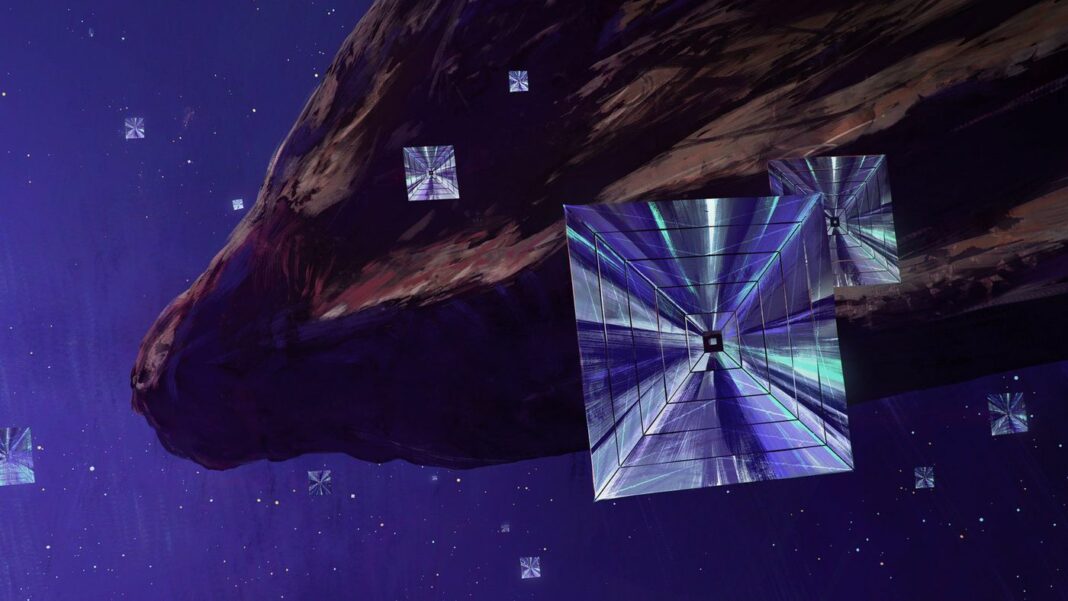If a probe were sent to the interstellar object 1I/ʻOumuamua, it would take 26 years to reach it, provided it launches in 2028. Project Lyra, led by the Institute for Interstellar Studies (i4is), proposes the concept of a spacecraft that would use the gravity of Jupiter to reach its maximum speed, in addition to a solar sail to be propelled by the Sun.
Oumuamua passed through the Solar System in 2017 and caught everyone’s attention. Not only because it is the first interstellar object to be detected in the vicinity, but also because of its elongated and somewhat mysterious shape. Much is speculated about its true nature, but the truth is that the only way to end any doubt is to send a probe to the object.
The project has been testing mission-approach concepts that use currently available technologies. So far, the team has considered nuclear thermal propulsion and a laser sailboat — something akin to the Breakthrough Starshot, which plans to reach Alpha Centauri in 20 years.
Want to stay on top of the best tech news of the day? Access and subscribe to our new youtube channel, Kenyannews News. Every day a summary of the main news from the tech world for you!
Most of the proposed approaches to Oumuamua, until then, considered the Solar Oberth Maneuver (SOM) concept. Basically, solar radiation pressure is used to gain maximum speed using a light solar sail, which would greatly reduce the costs of a mission.
Gaining speed with gravitational pull
An alternative, then, would be the Gravity Assist technique, used for exploration missions since the early 1970s. In it, the gravitational forces of three celestial bodies are used to accelerate the probe and send it towards its final target. .
Adam Hibberd, a researcher at i4is and lead author of the project’s most recent study, explained that the SOM concept has three steps to gain momentum: first with the Earth, then its aphelion, and finally the Sun. generate high speeds outside the Solar System,” added Hibberd.
However, instead of the Sun, the project considered the gas giant Jupiter to propel the probe with its gravity. According to the team, a solar gravity assist maneuver has never been performed and, therefore, the technological challenges are many – especially for heating the spacecraft when it reached its maximum approach to the star.
For these reasons, the project went on to consider the Jupiter Oberth Manoeuvre (JOM), a technique that uses the gravitational assistance of Venus and Earth to send a probe to Jupiter. There, it would receive one more “push” from the gas giant’s powerful gravity.
The advantages would be many, including the fact that the probe does not need a thermal shield, which would be necessary if it took advantage of solar gravity. On the other hand, such a maneuver would result in a longer mission time. If the solar sail project is launched in 2028, the spacecraft would reach Oumuamua by 2054.
